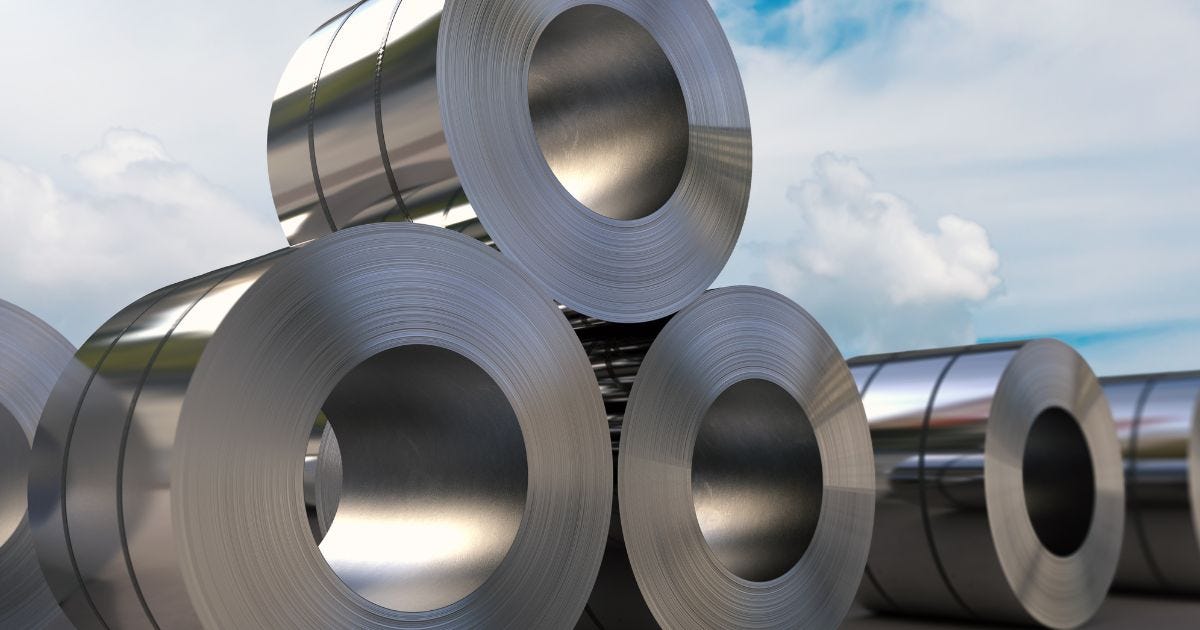Manufacturers Struggle as Steel Tariffs Reshape the Economy
As steel prices rise and supply chains shift, businesses face tough choices that highlight America’s deep cultural and economic divides.
America's steel tariffs show deep cultural splits in how businesses think about competition, resources, and solving problems.
What's Happening
Business activity index fell to 17-month low in February
Manufacturers that rely on steel revise financial forecasts due to tariffs
White House says tariffs give US metal producers breathing room, higher prices a 'natural result'
As metal prices spike and suppliers become unreliable, different cultural values become clear. Steel mills celebrate while other manufacturers must swallow costs or pass them to customers. These opposite reactions show basic differences in how Americans view the economy, time, and how government should interact with business.
Should American industry be protected even if it costs customers more, or should the free market run to keep prices down? It all depends on your Cultural Perspective.
Why It Matters
These cultural differences matter because they're changing America's industrial landscape beyond just price tags.
The tariffs reveal deep cultural splits. One side believes protecting U.S. producers is worth higher costs for everyone else. The other side believes in the free market an supply chains work best with less government interference.
Nucor praises tariffs as supporting an "America First Trade Agenda." Calder Brothers faces a sudden 15% jump in costs. This shows very different cultural ideas about what makes a successful economy.
This gap between metal producers and the manufacturers who use those metals shows America's cultural contradiction – trying to protect certain industries while also claiming to value free markets. Steel mills get government help while the companies that use steel are left on their own.
Neither view is better than the other – they just reflect different priorities and positions in America's complex industrial system.
What It Means
The tariff situation reveals three clear cultural patterns that create real problems for American manufacturing.
First, there's a split about time – should we focus on short-term gains or long-term stability? The White House says tariffs give domestic producers "breathing room" – a quick fix. Meanwhile, manufacturers face immediate price hikes and supply problems that threaten their future.
When Glen Calder says, "This is not a good time to even think about raising my prices," he shows the tension between what's happening to his business now and the government's longer-term goals. This clash between short-term and long-term thinking creates real business problems.
Second, we see individualism versus group thinking in how benefits and burdens are shared. Steel producers take an individualistic view, cheering policies that help their specific industry. The impact on the wider manufacturing community becomes less important.
This shows up when Nucor's CEO celebrates tariffs as part of an "America First Trade Agenda" while other manufacturers like HCC describe themselves as "the middle guy in the sandwich - squeezed from above and below." This focus on specific industries over the whole manufacturing ecosystem threatens the network of relationships that keep American industry running.
Third, power imbalances appear in how decisions flow through the supply chain. When Nelson's buyer reports that "mills have canceled orders, put orders on hold, and increased lead times," it shows how power sits with primary producers while other manufacturers must adjust to conditions they can't control.
This creates a situation where some businesses have much more power than others. When Nelson's customer asks how much of the tariff increases he plans to absorb, it reflects this power imbalance throughout the supply chain. How Americans accept these imbalances greatly affects how manufacturing works.
What's Next
These cultural divisions will likely grow as tariffs take full effect unless America finds ways to balance competing values in its industrial policy.
The tension between protecting metal producers and supporting manufacturers who use those metals will continue creating uncertainty and challenges across supply chains.
Watch for manufacturers to develop more coping strategies – absorbing costs, passing them along, redesigning products, or finding alternative materials. The future of American manufacturing depends on more than just tariff policies – it requires understanding how different sectors experience and handle these cultural divides.
Success will come from finding balance between protecting domestic production capacity and keeping the much larger manufacturing ecosystem competitive. Without addressing these cultural disconnects, America risks weakening the very industrial base it wants to strengthen.



